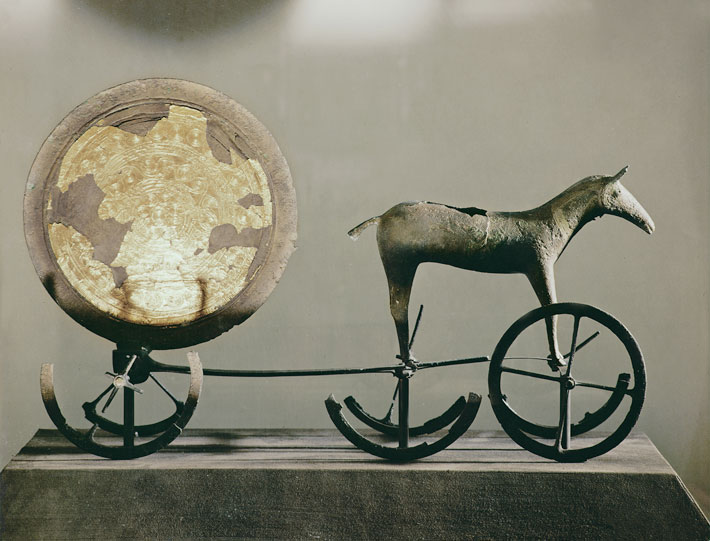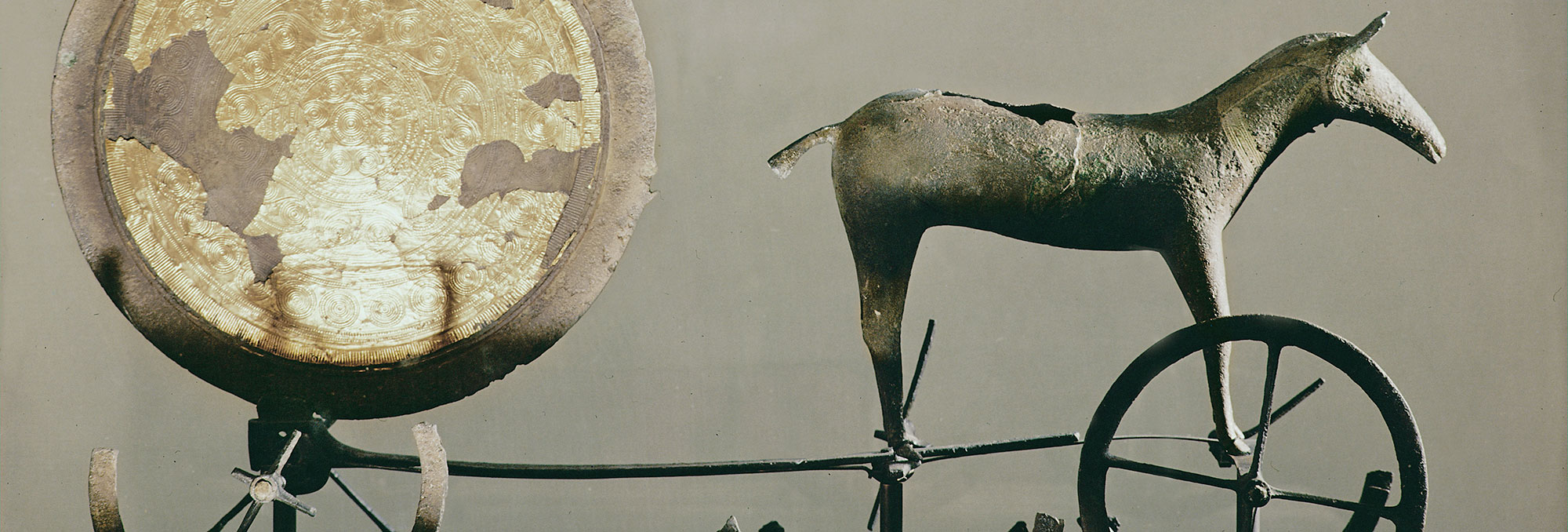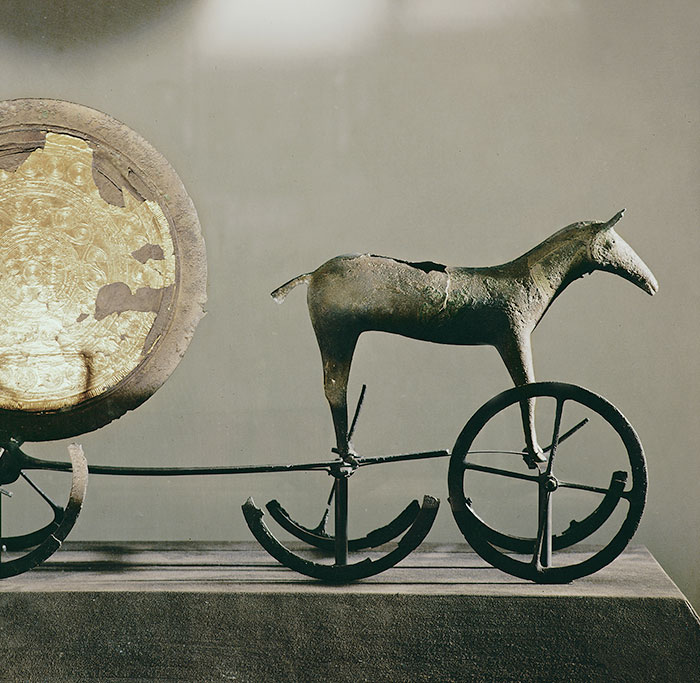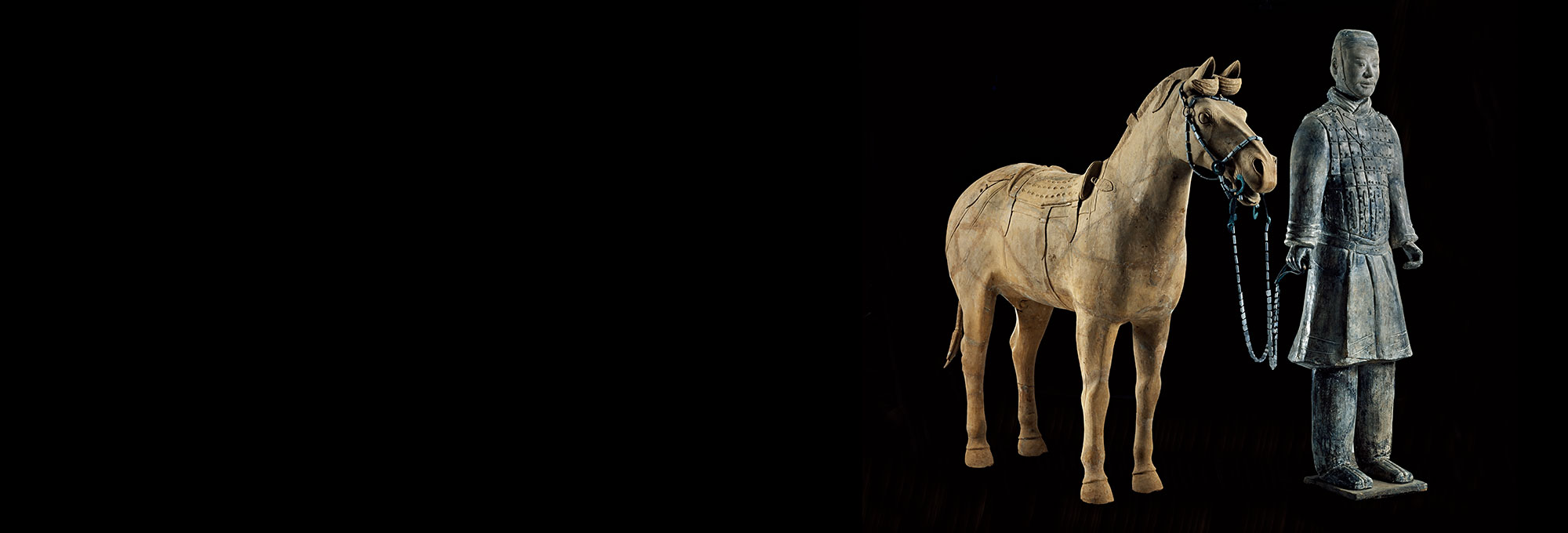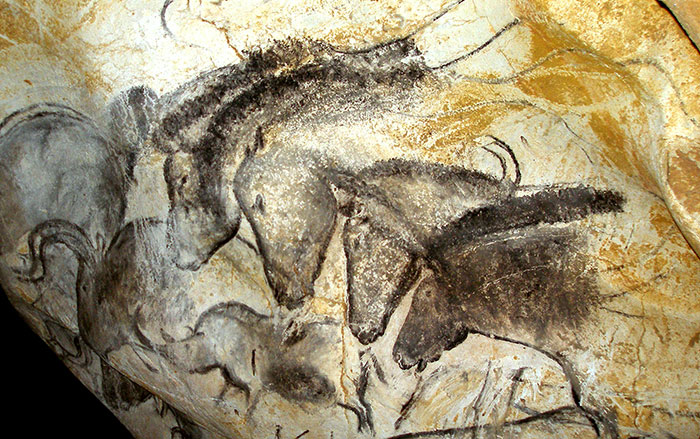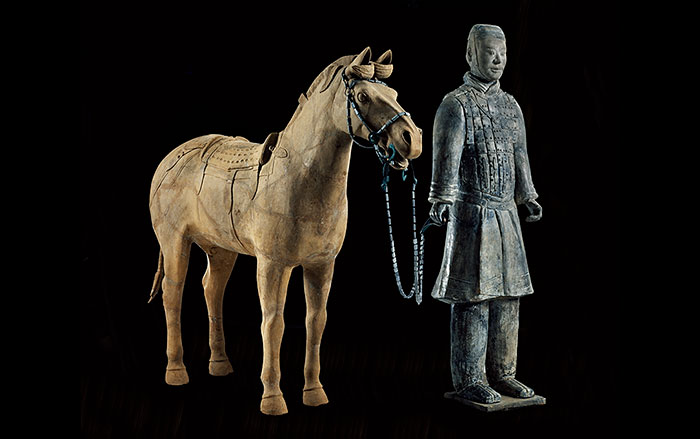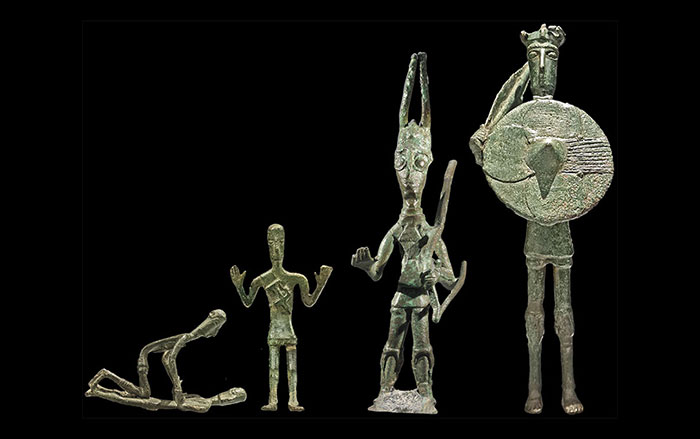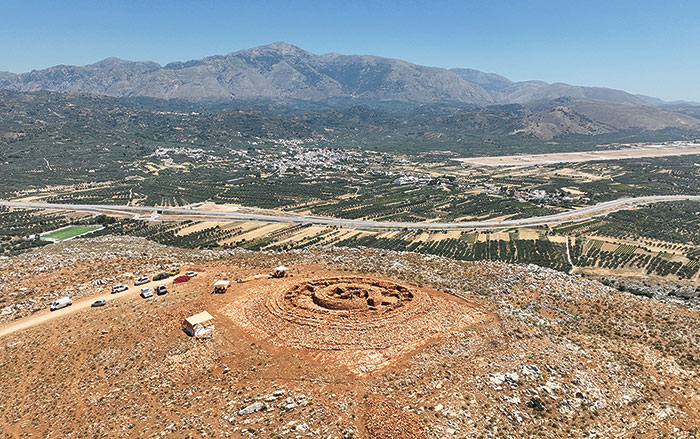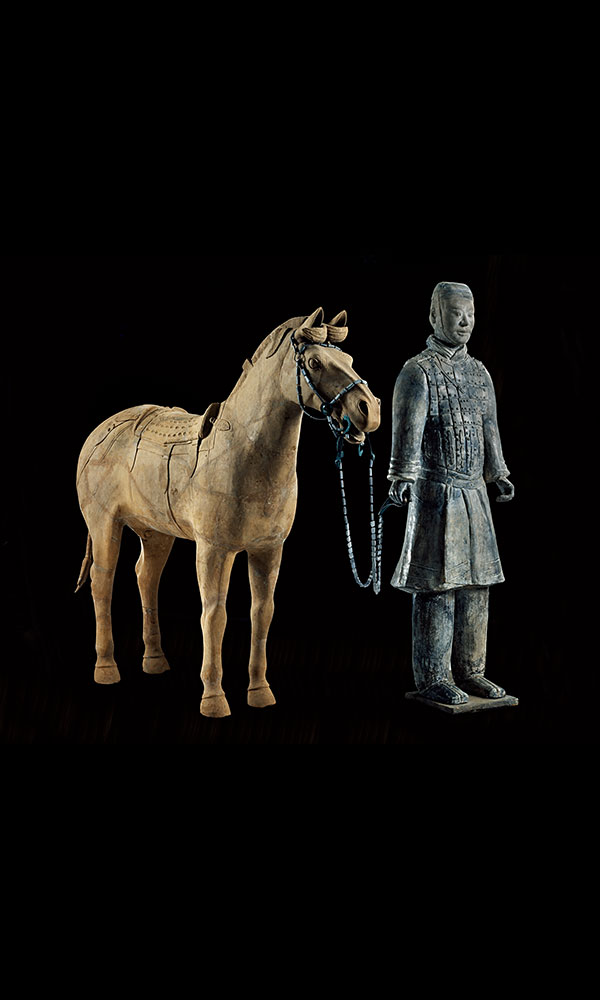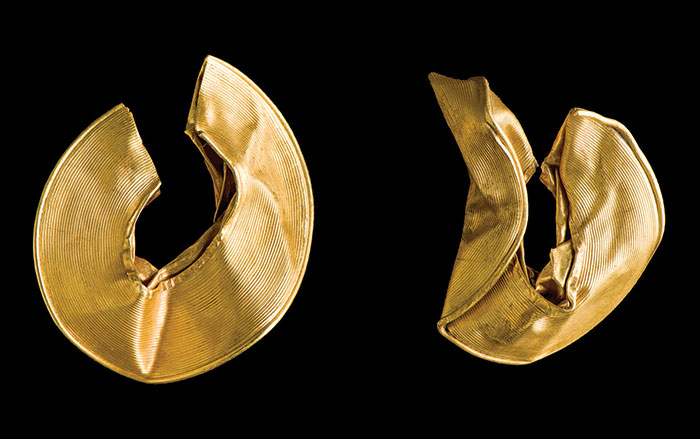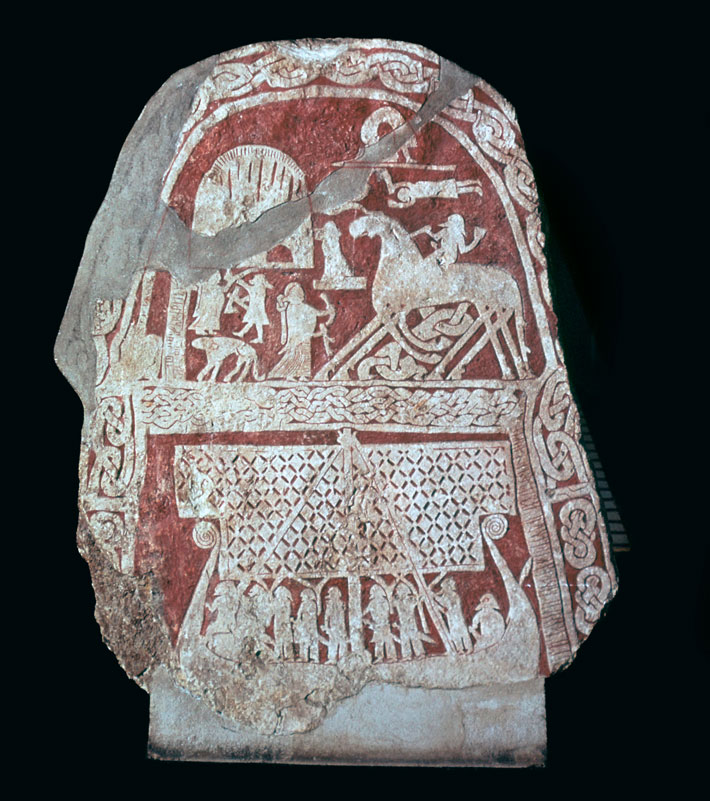
Some of the oldest myths in the Indo-European tradition concern the existence of supernatural or divine horses. The earliest text in Sanskrit, or indeed any Indo-European language—the family that includes most of the main languages of Europe, South Asia, and parts of western and central Asia—is the Rig Veda, a collection of sacred hymns written sometime in the late second millennium B.C., during the Bronze Age. Among its more than 1,000 hymns are prayers and poems appealing to and honoring the gods. At the time the Rig Veda was set down, the myths it references were already centuries, if not millennia, old, but it was during the Bronze Age that Indo-European-speaking peoples began to travel and trade across great distances, carrying with them beliefs that were then communicated across a vast territory, stretching from Asia to Scandinavia.
Archaeological evidence collected in Europe provides the strongest parallels for early Indo-European myths first set down on the Indian subcontinent, says Kristian Kristiansen of the University of Gothenberg. One of the most important of these shared Bronze Age myths is that of the sun cult, wherein the sun’s daily journey is symbolized by a horse drawing a chariot across the heavens. This is also widely interpreted as the journey from death to the afterlife.
In both ancient Greek and Norse mythology, too, there are supernatural horses. The winged stallion Pegasus is the offspring of the god Poseidon and the Gorgon Medusa, from whose neck he was born when she was beheaded by Perseus. After taming Pegasus, the Corinthian hero Bellerophon attempts to ride the horse to the gods’ home on Mount Olympus. But Zeus compels the horse to buck, sending Bellerophon back to Earth as punishment for his pride. Pegasus continues his journey heavenward to live in Zeus’ stables and carry his thunderbolts. Zeus also set Pegasus in the sky as a constellation marking the arrival of spring. Odin, the powerful Norse god of war, poetry, knowledge, and wisdom, also has a divine horse in his service. Renowned for his speed, the eight-legged horse Sleipnir carries Odin on his journeys through the Nine Worlds that are the homelands of the elements found in the Norse worldview—humanity, tribes of gods and goddesses, giants, fire, ice, dwarves, elves, and death.
